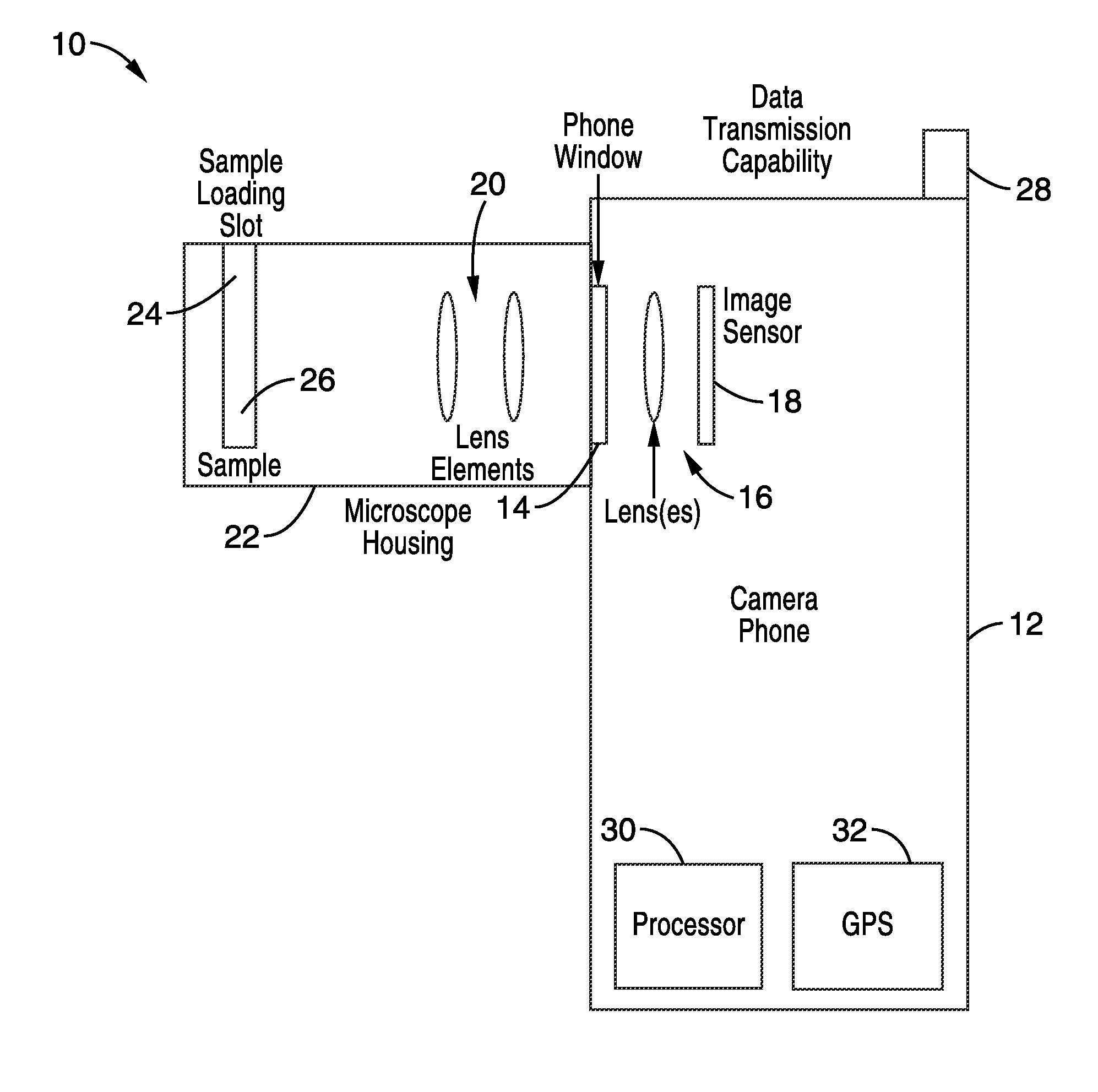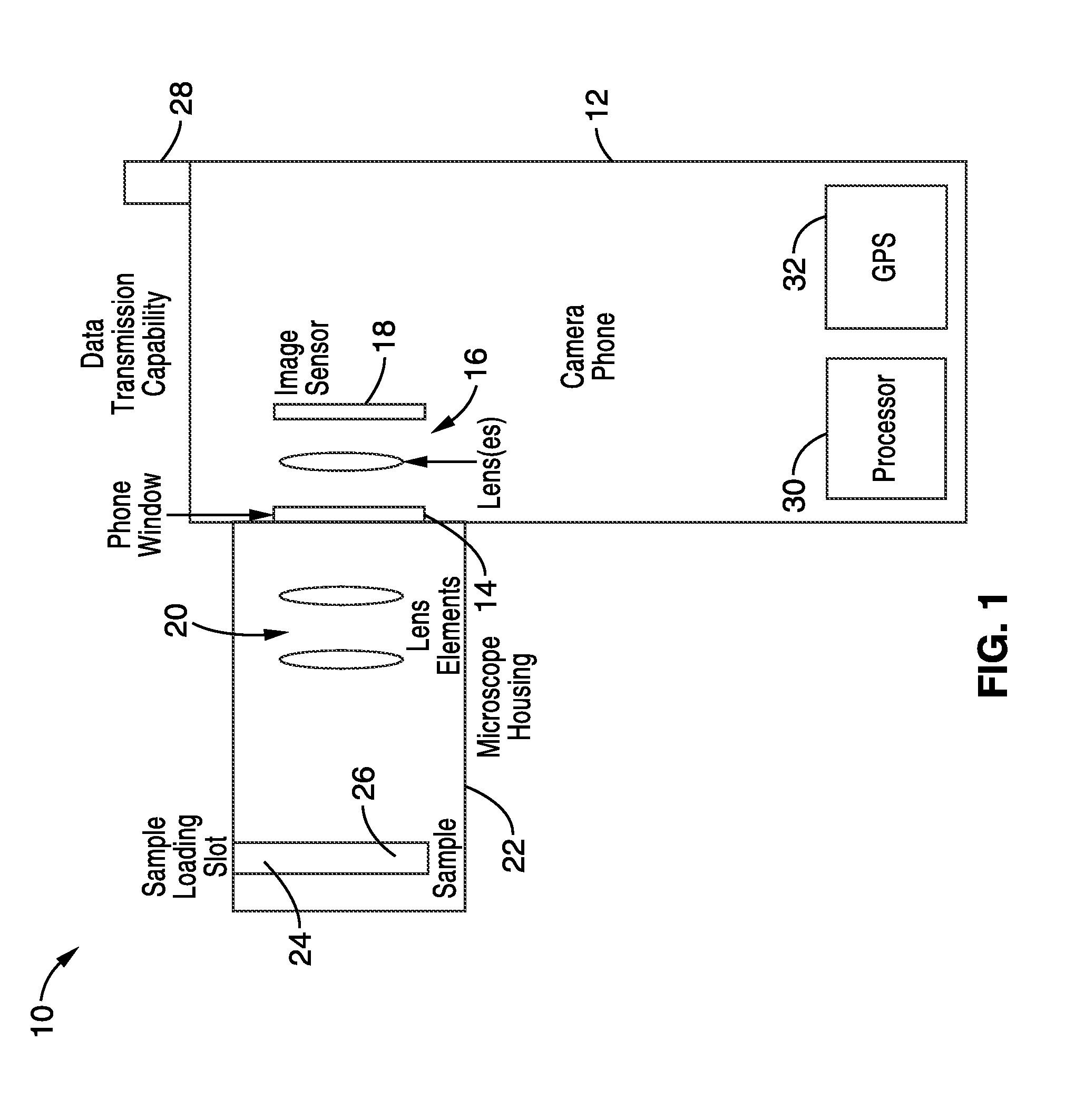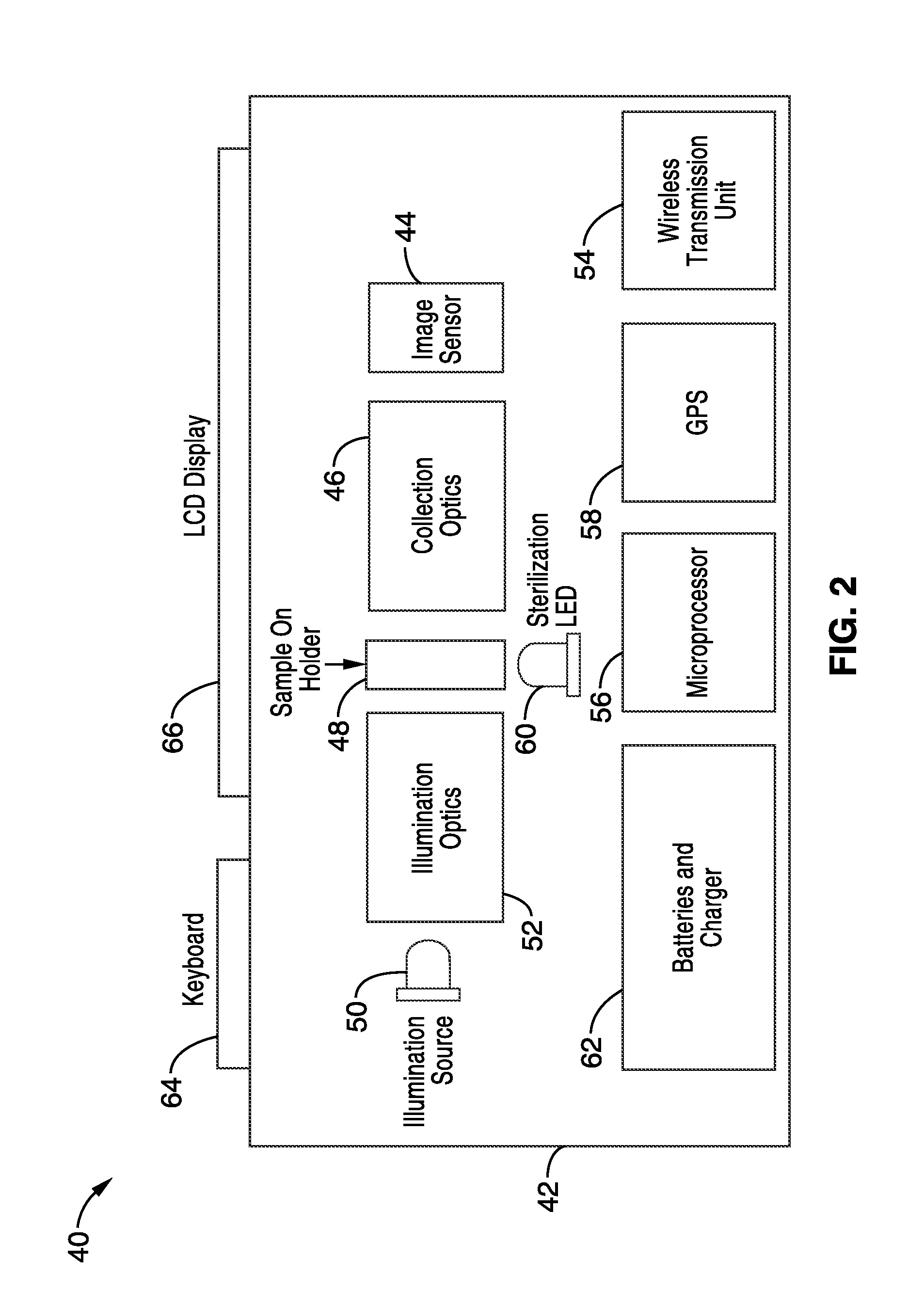High numerical aperture telemicroscopy apparatus
a telemicroscopy and numerical aperture technology, applied in the field oftelemicroscopy, can solve the problems of low numerical aperture optics, insufficient magnification and resolution for most microscopy applications, and inability to meet the needs of developing world countries, and achieve high resolution, and high numerical aperture optics
- Summary
- Abstract
- Description
- Claims
- Application Information
AI Technical Summary
Benefits of technology
Problems solved by technology
Method used
Image
Examples
Embodiment Construction
[0085]The present invention is a device which combines many of the benefits of the medical instruments with portability, low power consumption, cellular data transfer capability, and lower cost. In the simplest implementation, additional optics are attached to a standard camera-phone (cell phone with built-in camera). Such a system can also have software that assists in image acquisition, image processing (e.g. counting of the bacilli in a tuberculosis-positive sputum smear), appending patient information to the image or data derived from the image, and uploading of the information to a server or other computer system (possibly including another phone) for diagnosis, medical consultation, general record keeping (e.g. for reimbursement purposes), epidemic tracking or general epidemiology, etc. Furthermore, information can be downloaded to the phone in use, e.g. to provide patient record data for patients to be seen the next day, synchronize records, provide updated results from other...
PUM
 Login to View More
Login to View More Abstract
Description
Claims
Application Information
 Login to View More
Login to View More - R&D
- Intellectual Property
- Life Sciences
- Materials
- Tech Scout
- Unparalleled Data Quality
- Higher Quality Content
- 60% Fewer Hallucinations
Browse by: Latest US Patents, China's latest patents, Technical Efficacy Thesaurus, Application Domain, Technology Topic, Popular Technical Reports.
© 2025 PatSnap. All rights reserved.Legal|Privacy policy|Modern Slavery Act Transparency Statement|Sitemap|About US| Contact US: help@patsnap.com



